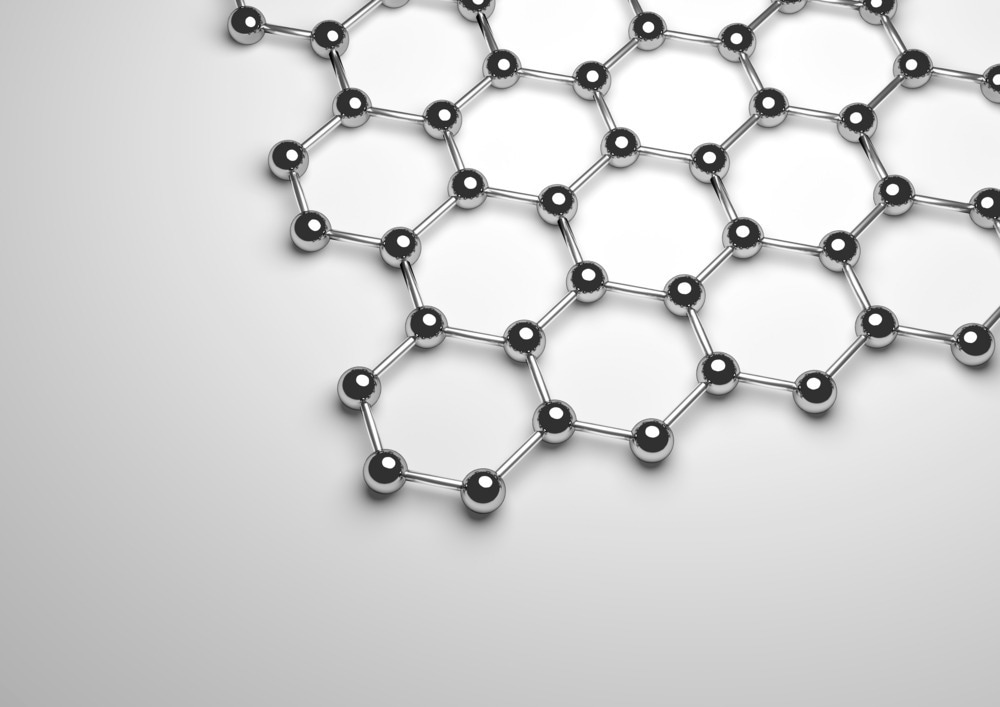Graphene is an extraordinary two-dimensional (2D) substance that has piqued the curiosity of both academics and industry. It possesses excellent electrical and thermal conductance as well as good mechanical behavior, making it a viable material for electronic devices, structural components, solar cells, and sensor systems.

Study: Carbon clusters on substrate surface for graphene growth- theoretical and experimental approach. Image Credit: Forance/Shutterstock.com
A recent study published in the journal Scientific Reports focuses on developing a novel approach for graphene growth on different substrate surfaces using carbon clusters. The researchers incorporated both theoretical and experimental methods for realizing graphene growth.
Graphene Growth: Overview and Significance
Graphene research has increased exponentially since its identification over a decade ago, owing to its remarkable electromagnetic, photonic, structural, and chemical characteristics.
Precise graphene growth on substrates has significant benefits for post-processing applications since graphene can grow effectively on insulators if the substrate is suitable. In this regard, the substrate used is an important component in producing high-quality graphene films.
In general, metallic catalysts are required for graphene formation, and the graphene film must be transferred to insulation material for electronic applications.
Most graphene applications are currently limited to the laboratory due to constraints in the manufacturing process of defect-free and high-quality graphene. Mechanical exfoliation is the simplest technique for graphene formation. This method yields monolayer, defect-free graphene of the highest grade. However, this strategy is only applicable to small-scale graphene growth.
Methods Currently Used for Graphene Growth
Many alternative ways of manufacturing graphene strive to achieve large-area, high-quality graphene growth. These processes include chemical abrasion, chemical polymerization, pulsed layer deposition (PLD), and thermal chemical vapor deposition (CVD). The CVD method is the most extensively utilized synthetic approach for graphene growth among these methods.
Graphene films generated by CVD are post-annealed in carbon dioxide rather than oxygen, resulting in a super-flat surface achieved by targeted ablation. Carbon dioxide, as a moderate etchant, effectively removes inherent impurities of the as-prepared graphene sheets during the post-etching procedure following graphene growth at temperatures over 1000 degrees Celsius.
Pulsed layer deposition (PLD) is another useful approach for creating thin graphene sheets on various substrates. Amorphous carbon clusters can be carefully deposited on a substrate surface in a carbon dioxide environment using an appropriate temperature supplied by the PLD technique. These carbon clusters uniformly occupy the surface upon reaching the substrate, producing remarkable graphene films.
Highlights of the Current Study
This study used theoretical and practical techniques to explore the growth morphology of carbon clusters placed on various surfaces. The researchers employed graphene growth as a testing criterion to assess the capacity of carbon clusters during the research.
The theoretical method used molecular dynamics (MD) to assess the adsorptive stability of carbon clusters deposited on various substrates. The disparity in total energy of a supercell was used to assess the adsorptive stability. The researchers evaluated the absorptive stability of carbon clusters using sapphires, strontium titanate, magnesium oxide, and silicon as potential substrates.
Estimating absorptive stability on different surfaces could be extremely useful in determining the best substrate for graphene growth. The theoretical molecular dynamics (MD) simulation findings were experimentally validated using layer-by-layer graphene growth on targeted substrates using the pulsed laser deposition (PLD) technique.
Important Findings of the Research
Using a supercell, the researchers assessed the absorptive stability of the carbon clusters on different substrates. The microstructures of the substrates were tuned using a vacuum slab, and the uppermost surface of the supercell was modified for density functional theory (DFT) analysis.
Graphene was only expected to exhibit a super-flat surface on strontium titanate among the possible substrates based on the absorptive stability analysis. To test the theoretical model's findings, a variety of substrates were employed to experimentally grow graphene in a carbon dioxide environment, and the films were observed using atomic force microscopy (AFM).
As projected by the theoretical model, only the graphene film deposited on a strontium titanate substrate exhibited a super-flat surface, which was equivalent to the super-flat CVD graphene prepared by carbon dioxide annealing.
Based on these results, it is reasonable to conclude that absorptive stability analysis can be used as a flexible tool for identifying a target substrate with the best crystallographic orientation for graphene growth.
Reference
Kaneko, S. et al. (2022). Carbon clusters on substrate surface for graphene growth - theoretical and experimental approach. Scientific Reports. Available at: https://doi.org/10.1038/s41598-022-20078-x
Disclaimer: The views expressed here are those of the author expressed in their private capacity and do not necessarily represent the views of AZoM.com Limited T/A AZoNetwork the owner and operator of this website. This disclaimer forms part of the Terms and conditions of use of this website.